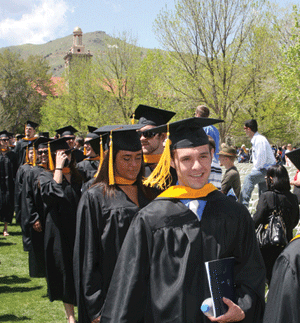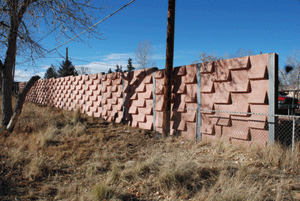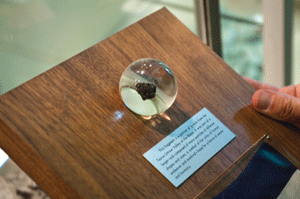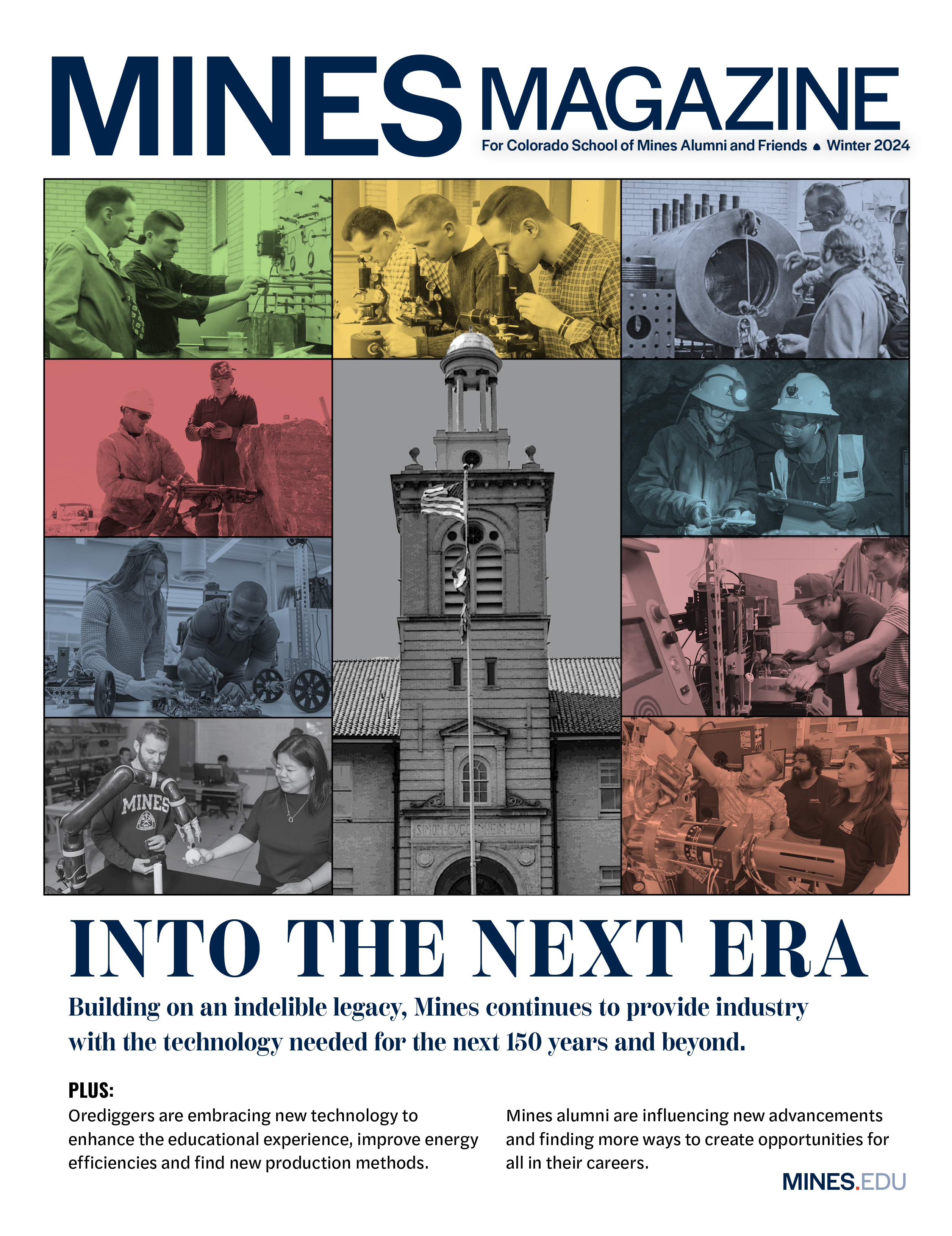Getting from Point A to Point B—autonomously
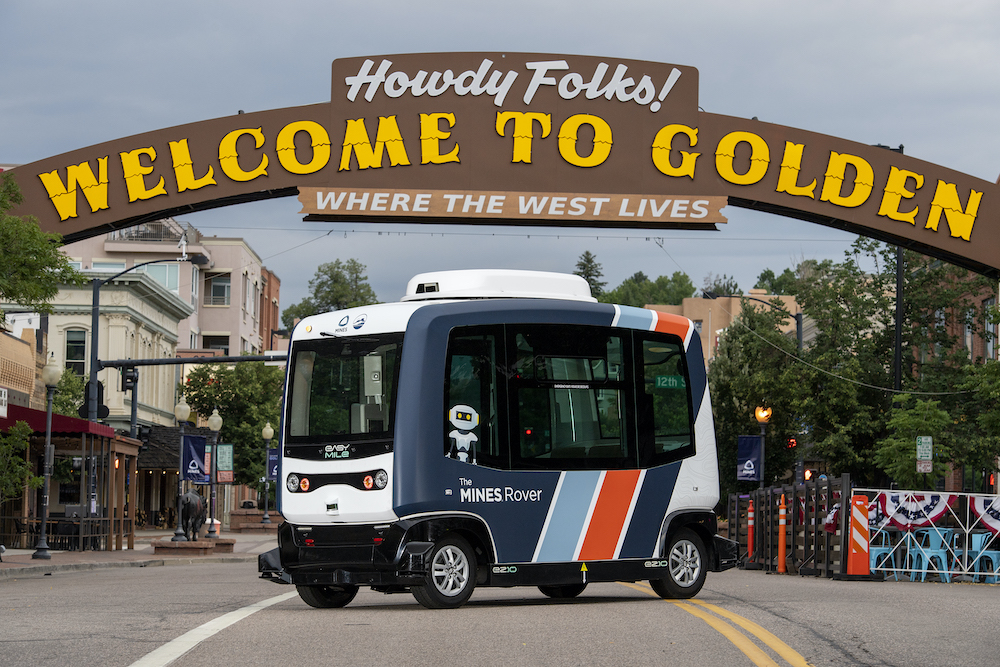
Mines welcomed a new addition to campus this fall—a fleet of nine driverless, zero-emission shuttles to connect the school’s central campus, athletics complex, student housing and downtown Golden.
The shuttle service—dubbed The Mines Rover—is the nation’s largest fleet of low-speed, autonomous electric vehicles that will safely navigate complex environments across three different routes using advanced sensors, cameras and lidar, or light detection and ranging. The shuttles are also integrated with regular traffic, signaling a major step forward for the industry and the largest opportunity yet for the public to experience an autonomous public transit service.
We talked to Abraham Eng ’14 and Alaudeen Lazkani ’14, who were both part of the deployment team at EasyMile—the company that provided the shuttle technology—about bringing the shuttles to campus and the future of autonomous vehicles.
Mines Magazine: What has it been like coming back to campus and being part of the shuttle implementation team at Mines?
Eng: When I interviewed for my original position at EasyMile, I brought up the idea that Mines would be a great site for this. When I was finishing my degree, I was taking the train to campus, and anyone who takes the train into Golden knows you’re kind of stuck at the Golden station without a good way to get to central campus. And as the campus gets bigger and getting across campus is going to be a pain for everybody, I knew Mines was going to be a great site for this kind of technology, and I’ve been pushing for it ever since.
Lazkani: As somebody who went to the school, it’s nice to be able to come back and now bring this new technology to the school. It’s an honor to have that opportunity to come back and contribute in this way after getting so much from the school as a student.
MM: How did your background knowledge of Mines help you on this project?
Eng: Just knowing the kind of layout and the end uses people need was helpful. I used to live at Mines Park, and it’s fine getting to campus in the morning, but in the afternoon it’s a lot harder walking up that hill.
Lazkani: Knowing the routes, knowing the quickest ways to get from point A to point B and knowing how busy certain areas of campus can be and just being familiar with campus helped us get the vehicles on the right routes and optimize
the efficiencies.
MM: What have been the challenges of deploying this service at Mines?
Eng: Nine vehicles is a challenge just in itself, because the more moving parts you have, the more there is to balance. And then there are things like making sure the network bandwidth from cell providers is sufficient for us. Also, like everyone knows, Mines’ campus is quite hilly, so we wanted to make sure an electric vehicle is going to put out the right amount of juice to go up and down hills, and we had to make sure we’re balancing what’s reasonable locally to be a good, achievable service versus having to really tackle those steep slopes. Plus, we had to make sure we are fitting into the existing Mines ecosystem.
MM: What excites you about the future of this technology?
Eng: For me, I really think the idea of a shared, autonomous vehicle is going to be a real boon for environmental issues. It’s one thing to have a personal autonomous vehicle, but that doesn’t really reduce the number of vehicles on the road. It we can make this kind of smaller but shared autonomous vehicle that can help connect people to other public transportation or shopping centers, we can fill in what they call the “first mile/last mile problem” in public transit.
Lazkani: It’s always fun. It’s always interesting. It’s never boring. And I’m excited to see where we’re going to be in the next five years or the next 10 years, because at the rate of growth that we’re at, who knows what we’ll be doing and how fast or how much further we can get with this technology and through learning more about different lidars and different sensors. There’s really only room to grow.
The Mines Rover quick facts
9 autonomous shuttles operating
on campus
100% electric, driverless vehicles
6 seated passengers in each shuttle
at a time
3 fixed routes connecting campus
and downtown Golden
18 designated shuttle stops
12 mph maximum speed for
each vehicle
How the technology works
Each driverless vehicle is designed around a suite of instruments that constantly and completely monitor the vehicle’s environment and orientation within that environment. These instruments include lidar sensors, finely adjusted GPS data and measurements of vehicle accelerations and distances. All shuttles operate with a customer service ambassador—a trained Mines student—who engages with riders and can take manual control of the shuttle if necessary.

